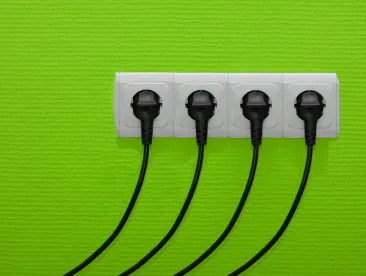NYPA PARTNERS WITH ZINC8 FOR A ZINC-AIR ENERGY STORAGE DEMONSTRATION PROJECT
-
On January 17, the New York Power Authority (“NYPA”) announced its collaboration with Zinc8 Energy Solutions (“Zinc8”), a Canadian energy storage company, to develop a demonstration 100kW / 1MWh behind-the-meter zinc-air energy storage system. NYPA selected Zinc8 through its Innovation Challenge launched in May 2019 in partnership with New York University’s Urban Future Lab. NYPA will support the development, fabrication, and installation of the energy storage system in western New York. NYPA anticipates choosing a site that is most likely to benefit from the technology by the end of the first quarter of 2020 and install the unit in 2022. NYPA entered the partnership as part of its effort to meet New York’s goal of generating three gigawatts of energy storage by 2030 and 100 percent zero-carbon electricity by 2040.
-
Zinc8’s technology uses a zinc regenerator to generate zinc particles, which then flow to a storage tank, where they are maintained in a potassium hydroxide electrolyte. The zinc particles are delivered to a power stack, which recombines the particles with oxygen to generate electricity. The zinc oxide byproduct then moves to the storage tank for later regeneration.
-
The technology promises to be a low-cost and longer duration storage solution than traditional batteries, such as lithium, cobalt, and vanadium. Moreover, it is expected to integrate more renewables onto the grid while forgoing the expensive resources required for traditional batteries.
POWER LEDGER AND M-RETS TO LAUNCH U.S.-BASED RECS MARKET
-
On January 29, Power Ledger, an Australian-based blockchain technology company, announced its partnership with the Midwest Renewable Energy Tracking System (“M-RETS”) and Clearway Energy Group to launch a renewable energy certificate (“REC”) marketplace in the United States. M-RETS issues and tracks more than 100 million RECS per year through its online registry. Utilities, marketers, reporting entities, and generators all use M-RETS’ system to track their RECs, but they do not have access to a widespread platform to buy and sell RECs. To address this problem, the Power Ledger-M-RETS program will combine M-RETS’ tracking capabilities with Power Ledgers’ blockchain technology stack to create an integrated online platform to trade RECs efficiently and inexpensively.
-
In many states, businesses may trade RECs to meet their state-mandated clean energy usage rates, but there is no ubiquitous REC trading marketplace. Power Ledger estimates the annual value of the REC market is $3 billion, despite the difficulty of trading. This partnership could be one step closer to establishing a liquid REC market.
CALIFORNIA FINALIZES PLAN TO PROVIDE ENERGY STORAGE SOLUTIONS TO VULNERABLE POPULATIONS AT RISK OF WILDFIRES
-
The California Public Utilities Commission (“CPUC”) has moved ahead with a plan to shift funding towards incentivizing the purchase of residential energy storage systems by low-income, medically vulnerable, and other select groups of disadvantaged residents who live in Tier 2 and 3 “High Fire Threat Districts.” The program will also be open to customers who have experienced two discrete “public safety power shutoff” events, such as the multiday blackouts that impacted California last fall.
-
CPUC plans to finance the program by reallocating funds within California’s Self-Generation Incentive Program (“SGIP”). The SGIP provides financial incentives for installing new qualifying technologies to meet all or a portion of the electrical needs of a facility. For further explanation, please see Volume 5 of the Energy Storage Handbook.
-
The CPUC will now direct 63 percent of the SGIP’s new funding through 2024 to a newly created “equity resilience budget.” Additionally, the CPUC has reserved $1 per watt-hour subsidies, the most generous subsidies available under the SGIP program, to residents who could face serious deprivation or death due to a multiday blackout. The CPUC plans to reduce the remaining categories in SGIP’s budget accordingly to pay for this new incentive.
TENNESSEE VALLEY AUTHORITY’S GREEN INVEST PROGRAM PROVIDES RENEWABLE ALTERNATIVES FOR CONSUMERS
-
On January 22, Vanderbilt University (“Vanderbilt”), Nashville Electric Service, and the Tennessee Valley Authority (“TVA”) entered into a 20-year agreement to procure off-site, large-scale renewable energy. Vanderbilt entered into the agreement to advance its goals of powering its campus exclusively with renewable energy and becoming carbon neutral by 2050.
-
The focus of the agreement is a new 35 megawatt solar facility in Bedford County, Tennessee. This supply of electricity will offset approximately 70 percent of Vanderbilt’s annual indirect greenhouse gas emissions from purchased electricity. The facility is scheduled to begin generating electricity in fall 2022.
-
Nashville Electric Services is the first major municipal power utility in the TVA region to sign a 20-year agreement with the TVA, which will allow for a 3.1 percent rebate on power costs through the Green Invest Program.
-
The agreement is the first of its kind under TVA’s Green Invest Program. The Green Invest Program provides avenues for energy consumers to partner with a local power company to foster long-term agreements to build new, large-scale renewable energy installations in the TVA region.




 />i
/>i
